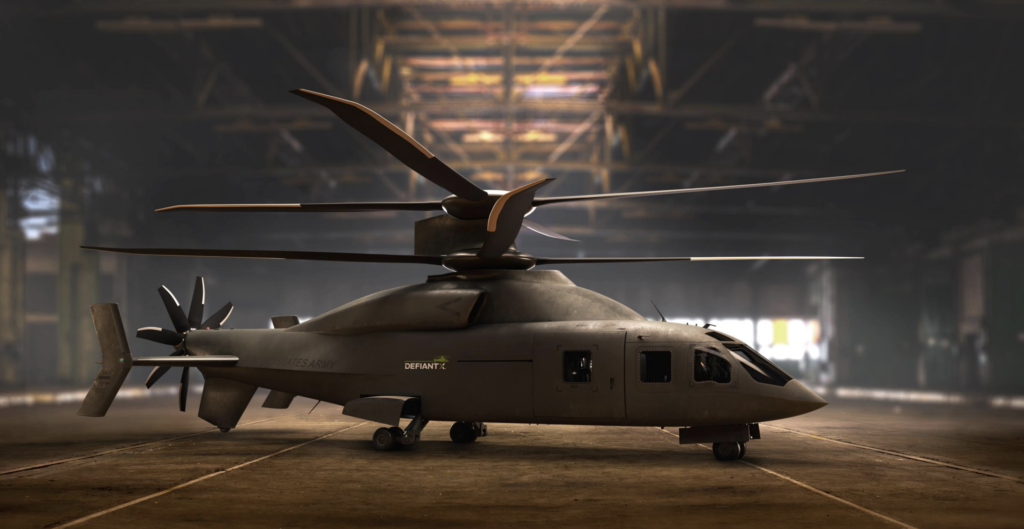
Sikorsky-Boeing's SB-1 Defiant Helicopter Prototype Impresses Leaders in Flight Demo
A Sikorsky-Boeing team flew helicopter prototypes that could become the Army's next scout and assault rotorcraft.
In a demonstration Thursday for the U.S. Army's top civilian official, a Sikorsky-Boeing team flew experimental helicopter prototypes that could one day become the service's next scout and assault rotorcraft under the Future Vertical Lift (FVL) program.
The SB-1 Defiant helicopter prototype performed a series of aerial maneuvers to show off its unique X2 technology, which features a coaxial rotor blade system and a large propeller in the tail section of the aircraft designed to aid in forward thrust.
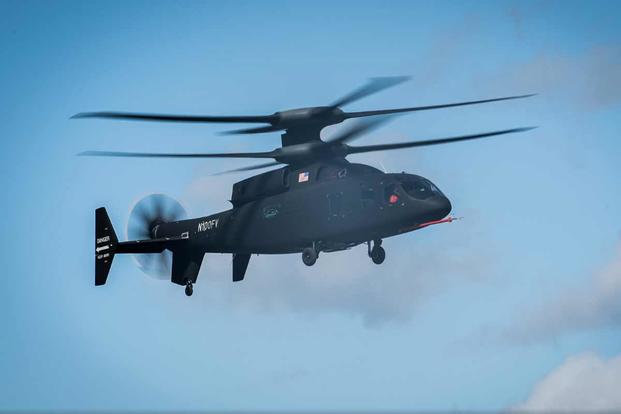
Both the Defiant and Raider are designed to fly at speeds of more than 200 knots, but they flew at slower speeds during the demo. The Defiant hit 140 knots, while the Raider reached 180 knots.
Both hovered, flew backward and performed pirouettes for the audience.
"When we are flying at 130 knots in this machine, we are using less than 20% of the prop power and less than 30% of the engine power," said Bill Fell, senior experimental test pilot for the S-97 Raider and the Defiant.
By comparison, Black Hawks, equipped for combat, fly at an average speed of 140 knots.
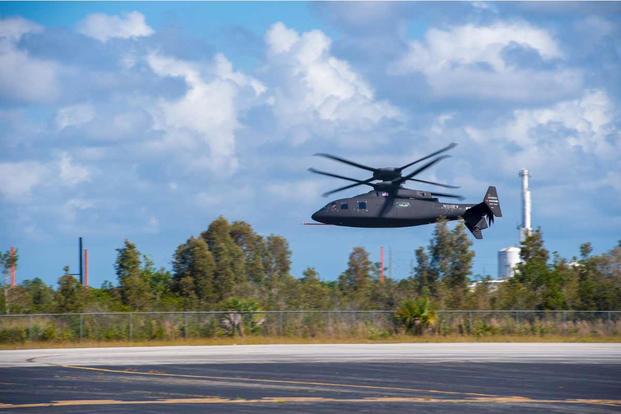
The Army is also scheduled to begin a competitive demonstration and risk-reduction phase for FLRAA, which is expected to last until 2022, the year the service plans to down-select to one vendor to build the Black Hawk replacement.
Sikorsky-Boeing officials remain highly confident that the X2 rotor technology will be part of the Army's Future Vertical Lift program.
"This really is a leap in technology; we didn't modify a helicopter to come [up] with X2," said Jay Macklin, director of Future Vertical Lift Business Development for Sikorsky. "This is new technology, which Sikorsky and Boeing have worked very, very hard to push forward."



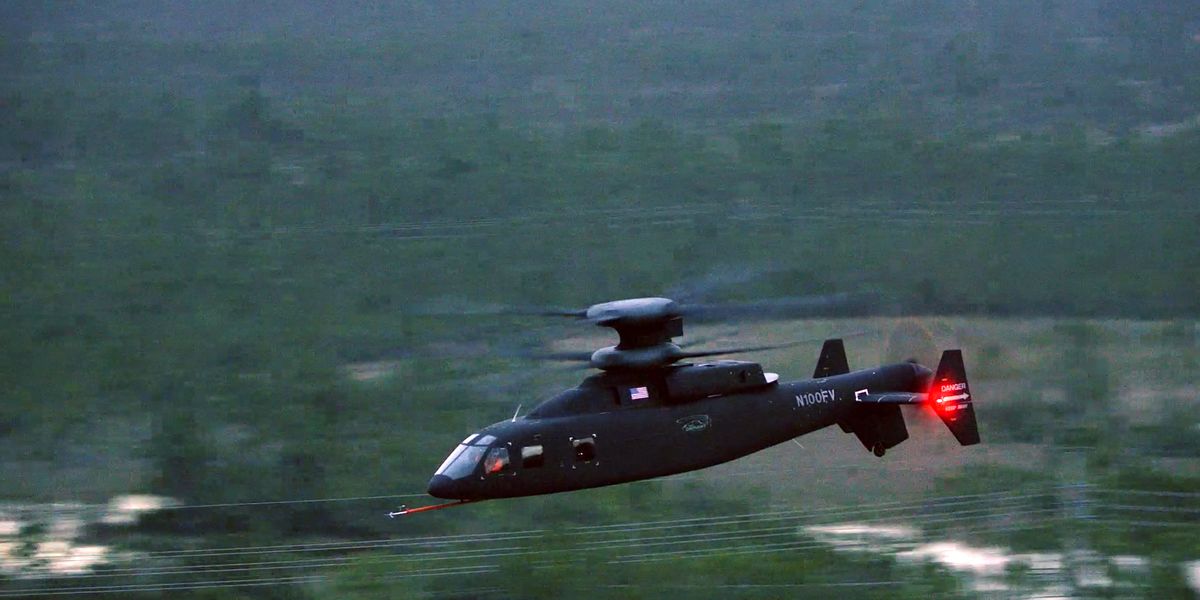
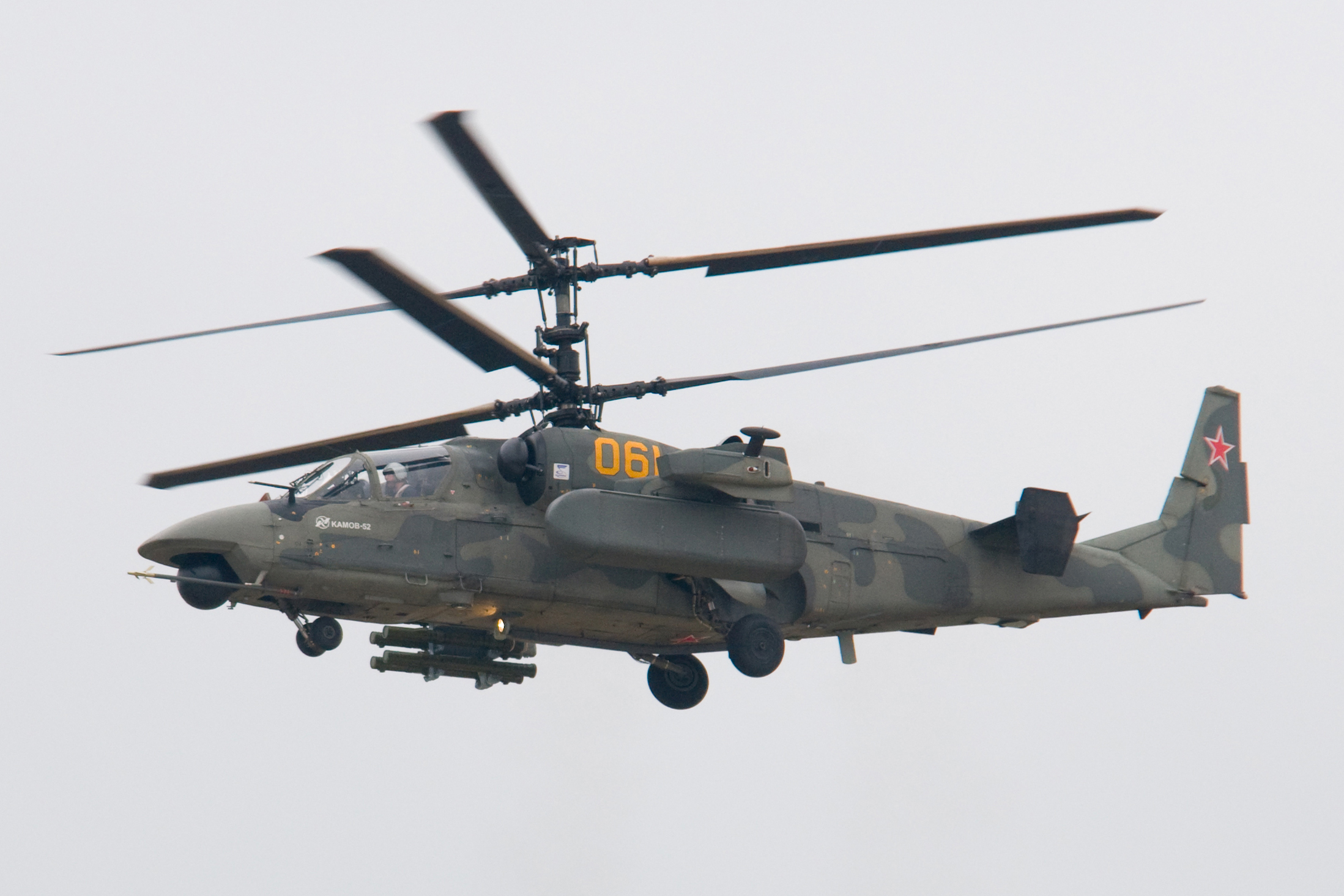
:quality(70)/cloudfront-us-east-1.images.arcpublishing.com/archetype/6NLSQBVAFRDMFH32QZNKPF236M.jpg)
:quality(70)/cloudfront-us-east-1.images.arcpublishing.com/archetype/NT2IBGCCXNEVFJWSB66UWZABNA.jpg)
